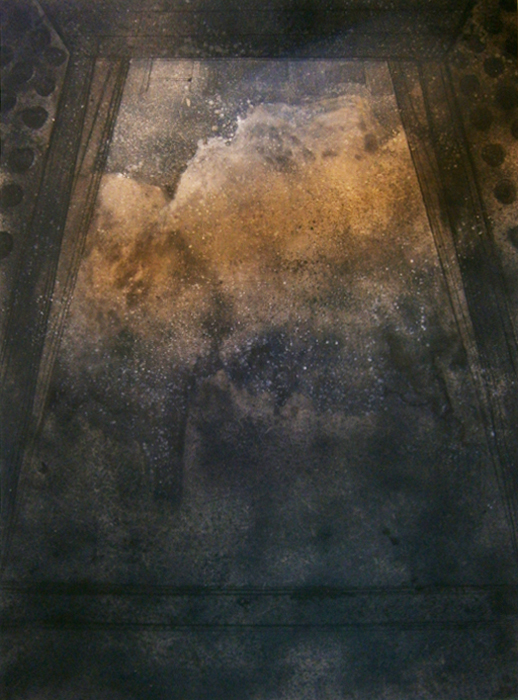
"Vaulting Limits" Exhibition
at Tenri Cultural Institute
in the Villages area
This event has ended - (2012-05-04 - 2012-05-26)
“Vaulting Limits,” curated by Thalia Vrachopoulos and Michelle Loh, presents new works by five mainland Chinese artists: Cao Jigang, Xiao Bing, Yuan Zuo, Wei Jia and Lin Yan. The works on view share common characteristics; all are ethereal yet vibrant, calming yet enlivening. They possess the power to transcend time and place, to transport one to a realm of mist, memory and otherworldliness. All these softly modeled shapes transform the semi-representational pieces, the abstract formats, and the abstracted landscapes into serene, non-commercial creative works. Their metaphysical clarity fosters a direct experience of the art, without the intrusion of print or concepts that would trigger mental interpretation. These original works generate pure experience. The silence they evoke refreshes the mind. All the artists in the show have mastered both European painting and traditional Chinese ink techniques. They are engaged in timeless, universal concerns that have for centuries defined their land, bringing into perspective the individual’s response to the universal. The show comments on the ability of art to transcend time and life’s transitory mutations. This art nurtures a deep experience, away from the everyday, that brings to our perceptions a mysterious non-physical vision that remains eternally current. It is a purely sensate gift to the spirit, which increases our wellbeing with our realization that art can evoke the transcendental in our daily lives.
Cao Jigang’s compelling tonal piece, “Silence and Meditation,” (tempera on canvas) evokes the traditional mountainous landscape inhabited for centuries by monks. Jigang’s enigmatic image is closely framed, stressing its steep elevation and vertical thrust towards the sky. It is obscured in a darkness that may symbolize the lingering presence of Chinese spiritual traditions that are fading, but remain in the country’s collective consciousness.

The forms in Xiao Bing’s powerful piece “Disappearing of Han Prose Rhyme,” (pigment on linen) are obscured by washes of pigment, creating murky shadows, signaling loss. This dominating work, which resembles a temple floor, asks more questions than it answers; uncertainty clouds its true identity. Xiao constructs views of historic buildings, making them as indistinguishable as contemporary Chinese culture and identity are becoming with globalization.

Yuan Zuo jubilantly expresses his artistic autonomy and individuality in two sensuous, loosely brushed, abstracted landscape paintings that celebrate nature and change with rich colors, thick impastos and calligraphic lines. His choice of media, oil on canvas, differentiates him from the other participants, marking his assertive adherence to a medium in which he is a master. Zuo’s poetic title, “Serene Valley White Night,” reveals his lyrical Chinese side while the use of oil paint in particular connects his process to Western art. For example, casino slots games are a good option for those who are still new to the world of online gambling. At vulkanbets.pl you will find a huge variety of such games, so you can choose one that matches more with a theme you like.
Wei Jia’s subtle handmade paper collages, mounted on canvas, have the look of faintly stained delicate fabrics. The use of hand-made paper asserts the strength of the human touch in the construction of art materials. His intuitive process of layering paper with paint yields both intentional and accidental forms. A figure appears, apparently inadvertently, in his piece entitled “No. 12131.”
Lin Yan’s original wall-works are constructed of cast bricks affixed to sheets of richly textured layers of traditional hand-made xuan paper. Her unique works, especially “The Leaves are Gone,” project a strong symbolic presence that is no less uplifting as it hints at degeneration or decline signaled by the winter’s approach.

The works in the show succeed in retaining a freshness that results from absence of a dogmatic agenda. Personal poetic statements that defy even basic labels hold sway, rendered obliquely, without specific themes or articulated subjects. Their mystery and originality create an aura of wonder, of discovery, that makes them compelling. Although Chinese culture is undergoing great changes, historic buildings, culturally revered landscapes and traditional materials such as hand-made paper, remain potent reminders of a world cultural leader whose transitory changes regenerate creatively.

Comments